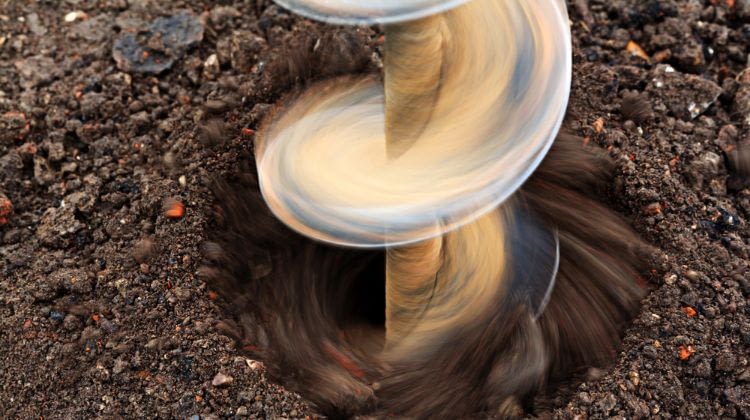
Deciding what size bit to use for your auger is important for efficiency on the construction site. Choosing an improper bit could damage the equipment by reducing its life and causing excessive wear and tear. Each application will differ from others; knowing the appropriate bit to use will help move production along and ensure functions on the job site are done properly.
Are You Attaching the Bit to an Auger or Another Machine?
Did you know that you can attach auger bits to your excavators, loaders, or backhoes? You do not necessarily need to always use this component on the auger itself. If you’re choosing the alternative route of mounting the bit on other construction machinery, this could impact the type and size of the bit. Ensure the component you select works efficiently with the equipment and is the right size, or you won’t be able to carry out the task.
How Big Do Your Post Holes Need To Be?
It seems logical to decide the size of a bit for your auger by the diameter of the hole you need for a post. Choosing this way will give you little room for error when you align the posts in a parallel line—using a bit around twice as large as the hole you need gives you enough wiggle room to align all the posts before filling in the rest of the hole with compact soil or concrete.
What Type of Ground Are You Drilling?
The type of ground you’re drilling through will also determine the size and kind of bit you attach to the machinery. Rock bits must only be used for drilling fracturable rock, permafrost, and asphalt, while earth bits are for softer dirt and soil. Forcing the wrong bit to perform a job could damage your equipment and slow production because the tool needs to work harder to drill a hole.
Other Factors To Consider: RPM Speed and Flighting
After configuring your hole size and the type of ground you will be drilling, you must also consider the RPM speed and the flighting on the bit to accommodate those factors. Earth bits operate at around 55-65 RPMs; rock bits move slower at 10-25 RPMs, and clay falls somewhere in between with 45-55 RPMs.
In addition to the above factors, the flighting on the bit will not determine the hole size but how much material it can pull to create depth. Common types of flighting to choose from are helicoid or sectional; both work great for different scenarios. Selecting the right size bit with the type of flighting you need will allow you to work quicker because you won’t need to repeat the task many times to reach the correct depth for your hole.
While choosing the correct size bit for your auger is important, so are various other components that could affect how you perform the job duty, like the ground type, RPM speed, and flighting. These factors go hand-in-hand when finding a bit for the auger. Decide on an appropriate attachment for the application to avoid damaging the equipment.